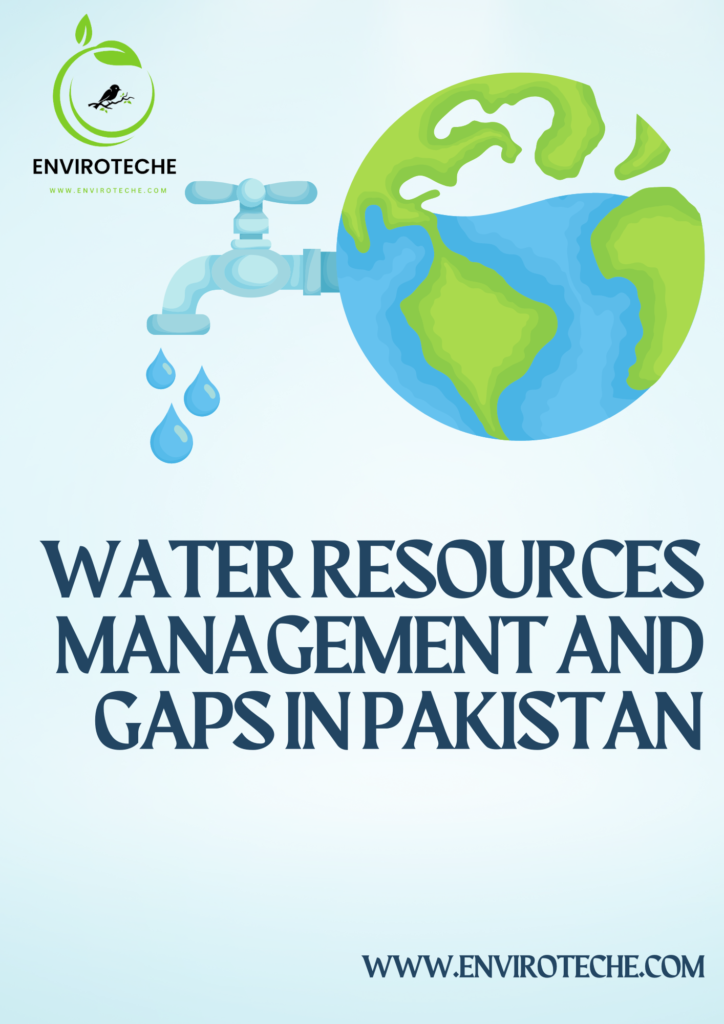
Hamna Naz1
1Department of Environmental Sciences, GovernmentCollege University Faisalabad
- Water resources
Water bodies in Pakistan include the Indus River, Gilgit River, Beas River, Ravi River, Sutlej River, Chenab River, Jhelum River, Punjab River, Swat River, Zhob River, Zanskar River, Suru River, Soane River, Shayok River, Ravi River, Kurram River, Kunar River, Gomel River, and Gar River. Notable dams on these rivers include the Mangla Dam on the Jhelum River, Tarbela Dam on the Indus River, and the upcoming Munda Dam on the Indus River.
In addition to the dams, there are several barrages on the Indus River, such as the Kotri Barrage, Guddu Barrage, and Sukkur Barrage. There are plans for the construction of another terminal barrage called the “Sindh Barrage” on the Indus River. Bridges spanning the Indus River include the Larkana Khairpur Indus River Bridge, Thatta Sujawal Bridge, Jhirk-Mula Katair Bridge, Dadu Moro Bridge, and Kandhkot-Ghotki Bridge.
The Indus Delta receives water from all the rivers, making it the most significant river system in the region. However, due to the construction of numerous water dams since 1940, the water flow below Kotri Barrage has drastically reduced to 33 billion cubic meters from the previous 180 billion cubic meters.
- Key Challenges:
- Shift from surface to groundwater use:
In recent decades, there has been a notable shift towards utilizing groundwater rather than surface water for agricultural, industrial, and domestic purposes. Unfortunately, this transition has led to the overexploitation of our water resources, primarily due to the dominance of small-scale private tube wells, which account for a staggering 80% of groundwater extraction.
This excessive reliance on groundwater, coupled with the escalating demands of agricultural activities, has resulted in a significant imbalance between water recharge and withdrawal. The rate of water withdrawal continues to surge relentlessly, while the replenishment of groundwater fails to keep pace due to time constraints. Consequently, the region experiences an annual loss of approximately 10 km3 of water, further exacerbating the situation.
The plummeting groundwater levels have not only rendered the extraction of water more costly but have also contributed to escalating salinity levels and a declining water table. As a consequence, numerous wells across the country have already dried up, exacerbating the water scarcity issue.
- Population Growth:
The global human population is experiencing an explosive increase, leading to a corresponding surge in the demand for water. Water is essential for various purposes, including agriculture, industry, and domestic use. Additionally, a substantial amount of water is being utilized in energy power plants for generating power. However, despite the growing demand, both the quality and quantity of water are steadily declining. The rise of industrialization and urbanization has resulted in higher living standards, further exacerbating the situation.
- Flooding
Pakistan is a country prone to frequent and devastating flooding, with a history of experiencing heavy floods every 3 to 4 years. According to the Federal Flood Commission, since 1950, Pakistan has endured approximately 20 catastrophic floods. The consequences of these floods have been extensive, with an estimated 599,459 square kilometers of land affected. Tragically, the loss of life has reached 11,239 individuals, and the economic toll has amounted to around 39 billion US dollars.
Wetlands play a crucial role in mitigating natural flooding during monsoon seasons by gradually releasing excess water in winter. However, the destruction of these natural wetlands, coupled with deforestation, exacerbates the risk of floods by promoting soil erosion and accelerating water runoff.
- Solutions
- Watershed management:
Watershed management refers to the systematic management of land use and water management practices aimed at safeguarding water resources within a given watershed. It involves a comprehensive approach that integrates the sustainable use of land and water resources to ensure their long-term protection and optimal utilization.
- Social Equity:
Water is an invaluable natural resource that should be distributed equitably among all species. Unfortunately, the construction of water dams and various human activities have been constantly disrupting the natural flow of water. A study conducted by Brazil Inland Fisheries between 2003 and 2007 revealed that the construction of dams in Brazil had a detrimental impact on the fish population, leading to a significant reduction in their numbers.
- Economic Efficiency:
Economic efficiency involves the effective utilization of resources while also considering budget constraints. It encompasses the sustainability of financial resources. For instance, let’s say you are implementing a system and investing your funds in constructing dams. However, you later realize that you have depleted your budget and don’t have enough funds to allocate toward the water transfer systems. This lack of financial planning can hinder future strategies. Therefore, your entire project must achieve maximum efficiency at a minimum cost.
3.4. Environmental sustainability:
Ecological information is crucial when considering the drainage of a system for water management purposes. It is necessary to carefully observe the potential disturbances to the natural flow and assess the potential impact of these changes on the environment and various species. River Basin Organizations play a significant role in monitoring and overseeing the implementation of water resources management practices on a global scale. Currently, there are 133 member organizations associated with international river basin organizations, all dedicated to the management of local river systems.
- Political Will and Commitment
Political will plays a crucial role in fostering unity among investors. When stakeholders find themselves in conflict, it becomes challenging to bring them together. In such situations, politicians can leverage their influence to engage actors or other influential individuals in the project, especially if ongoing conflicts persist among the stakeholders. The fundamental responsibility of politicians is to generate capital and facilitate the coordination of the management team and stakeholders to successfully accomplish the project.
- Conditions of water resources management in Pakistan:
The Indus River, one of the most depleted rivers globally, currently ranks fourth among the world’s depleted river basins. Serving as the backbone of the economy, the Indus River plays a vital role by providing water to all sectors. It serves as the primary tributary, while other contributing rivers include the Ravi, Chenab, Jhelum, Sutlej, Beas, and Sindh. To harness its water potential, Pakistan has established three mega reservoirs, 19 barrages, three inter rivers, 45 irrigation canals, and over 120,000 watercourses.
Primarily utilized in the agricultural sector, the water from the Indus River significantly contributes to Pakistan’s economy. With a 22 percent share in the country’s GDP, agriculture also employs 45 percent of Pakistan’s workforce. Various studies, such as the World Bank’s “Pakistan’s Water Economy: Running Dry,” have focused on water reservoirs, highlighting the concerning decline in water resources that critically impact Pakistan’s economy, alongside the increasing issue of sedimentation.
- References
Arfan, M., Ansari, K., Ullah, A., Hassan, D., Siyal, A. A., & Jia, S. (2020). Agenda setting in water and IWRM: discourse analysis of water policy debate in Pakistan. Water, 12(6), 1656. Water Resources
Dars, G. H., Lashari, B. K., Soomro, M. S., Strong, C., & Ansari, K. (2021). Pakistan’s Water Resources in the Era of Climate Change. Water Resources of Pakistan: Issues and Impacts, 95-108. Water Resources
Khan, H., & Murtaza, G. Assessing Social Impacts of Flood on Communities: A Case of District Jaffarabad, Balochistan. Balochistan. Water Resources
Pelicice, F. M., & Agostinho, A. A. (2009). Fish fauna destruction after the introduction of a non-native predator (Cichla kelberi) in a Neotropical reservoir. Biological Invasions, 11(8), 1789-1801. Water Resources
Check Other Schlorships:
